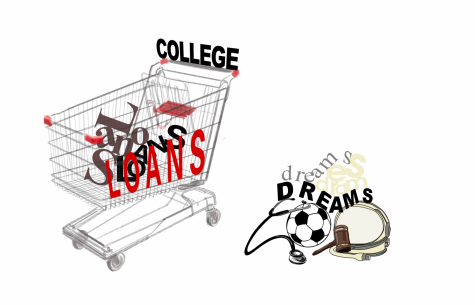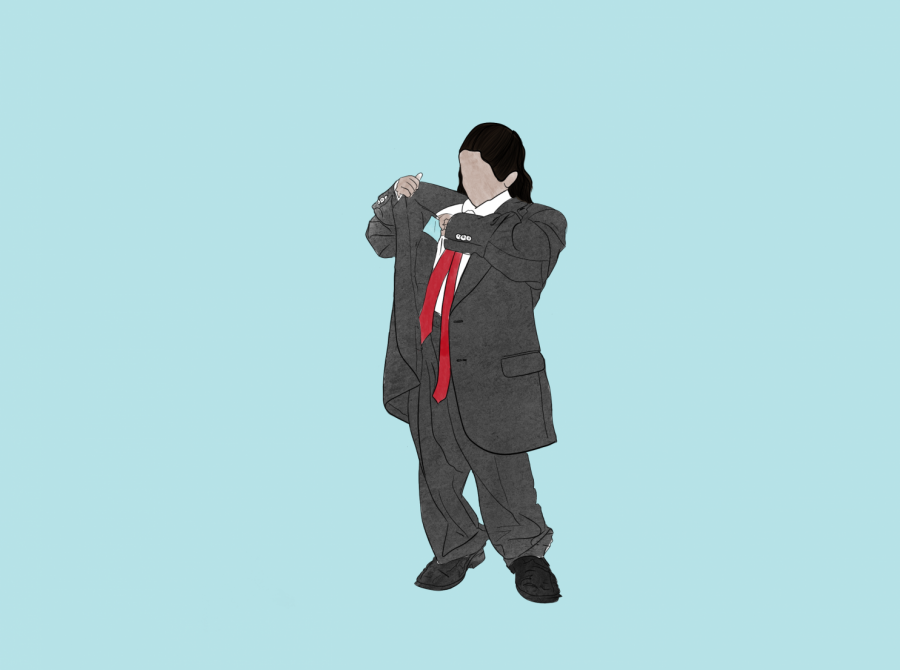Opportunity cost: The detriments of astronomical college tuition
It’s difficult to take advantage of educational opportunities and manage the burden of higher education tuition
As a child, I grew enamored with an executive career, but as I got older, my dreams for the future expanded far beyond a skyscraper.
November 9, 2021
I am 17 years old. I am at a point in my life where, due to my privilege and my age, there is almost nothing that I cannot do.
Granted, I will never be an Olympic gymnast (a long lost dream of 8-year-old me), nor will I ever be a violinist for the San Francisco Symphony. But, athletic and musical aspirations aside, the sky’s the limit.
As I apply to college, scouring university course catalogs and faculty research, I am constantly struck by this realization (or whenever I allow myself to think about college). I could become a doctor or a civil engineer, a policy analyst or a business executive. I could study zoology, geology, biology, kinesiology, ophthalmology, paleontology or make up an ‘ology’ of my own. I am at a stage in my life where if I chose to, I could go to space. To space!
As a kid, I dreamt not of royal kingdoms or talking animals, but of standard office jobs. I would leaf through my father’s office supplies, far more excited by thick file folders and neon Post-it notes than my toys. I knew from the meager age of seven that I belonged in an office building, typing up important notes on an important computer and making important statements while wearing important suits.

Then, I started reading more books. And though I remained enamored with a high-powered executive career, I suddenly fell into worlds of science, math, art and literature, illuminating pathways and universes that surpassed my wildest dreams. My mornings were spent with Ebenezer Scrooge, my afternoons with Nancy Drew and Laura Ingalls Wilder and my evenings with the March sisters and Matilda. Fantasy, mystery, historical fiction, even the National Geographic magazines that gathered dust on the school library shelves: I read them all. But nothing stuck quite like biographies.
I explored the galaxies with Sally Rice, broke bones and won medals with Mia Hamm and Kerri Strug, pioneered research in radioactivity with Marie Curie and lived among chimpanzees with Jane Goodall. I devoured the worlds of Eleanor Roosevelt, Amelia Earhart, Michelle Obama, Malala and countless others. Astronaut, soccer player, gymnast, politician, pilot, physicist — how was I ever to choose?
When I aired these concerns to my parents, they assured me that college would be the time to explore my vast intellectual curiosities. “Take whatever classes interest you,” my dad assured me. And indeed, as I made my college list, I prioritized just that — searching for the schools with the strong interdisciplinary curriculum that would allow for the most exploration. Browsing the course catalogs was exciting, albeit stressful. From critiquing canonized South Asian literature to exploring the intersection between philosophy and physics, it seemed like higher education really had it all.
As my mind rotated in an endless loop of essays to write, deadlines to remember and future tuition costs to account for, I found myself considering another peculiar question: how much does each class cost? The cost to attend a public, in-state school has tripled in the last two decades and is approximately $10,000 per year, while the average cost of tuition and fees for private school is $38,000 annually. So if the average college student takes four classes per semester, each class at public university is $1,250 and at private school, it’s $4,800. Furthermore, only 41% of public university students and 61% of students at private institutions graduate on time according to the National Student Clearinghouse Research Center, due to overfilled requisite classes, shifting majors and students juggling classwork and part-time jobs.
Expensive tuition creates a multipronged issue. It urges students to create a four-year — or less — plan and stick to it, filling up their years with only the required courses in order to graduate as quickly as possible. This in turn forces students to decide a major quickly and stick to it, leaving little room to explore niche interests or change majors in fear of increasing the amount of time before graduating. Moreover, it burdens students with managing unaffordable fees by taking on employment. Black and Latinx students, who comprise higher percentages of first generation and low income students, tend to work longer hours than their second-generation and wealthier counterparts. At worst, this increases their chances of not graduating on time or dropping out altogether. At best, it reduces the time they can spend exploring other on or off-campus opportunities like unpaid internships or clubs. Essentially, expensive college tuition exacerbates social inequality and limits intellectual exploration — the opposite of what higher education is supposed to represent.
I have found that I cannot browse a course catalog and not be captivated by classes which span every discipline, including ones I’ve never heard of before. My curiosity, it seems, has no limits — but my parents’ bank accounts do. So when I (hopefully) embark on my higher education journey, it’s not only the length of time in school that I’ll be considering, but also the ability of my salary to pay back their loans after I graduate.
I’ve always been told that the hardest lesson of adulthood I’d learn was that everything comes at a cost. I just never thought that lesson would come at the price of learning everything else I wanted to.

















